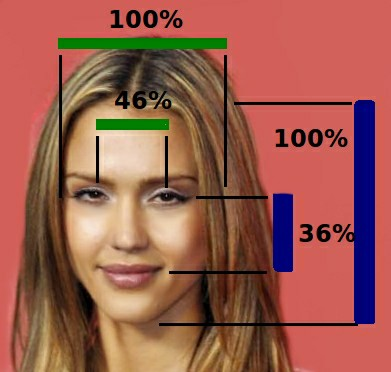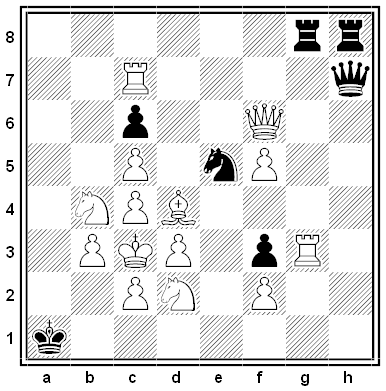A Natural Mistake
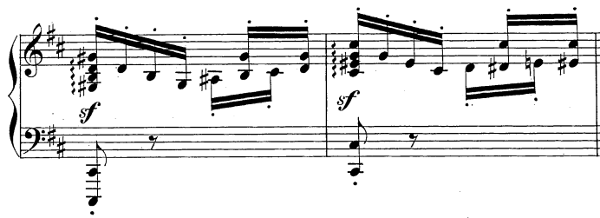
The story of a musical misprint, with perhaps a moral:
A student whom Dr Goldovsky describes as ‘technically competent but a poor reader’ prepared a Brahms Capriccio (Op. 76 No. 2) which she brought to her lesson. She began to play the piece through but when she arrived at the C sharp major chord on the first beat of the bar 42 measures from the end, she played a G natural instead of the G sharp which would normally occur in the C sharp major triad. Goldovsky told her to stop and correct her mistake. The student looked confused and said that she had played what was written. To Goldovsky’s surprise, the girl had played the printed notes correctly — there was an apparent misprint in the music.
The error occurred in most published editions of the piece; hundreds of musicians had overlooked it. Goldovsky tested his skilled readers by telling them that the piece contained a misprint and asking them to find it. He allowed them to play the piece as many times as they liked, but none found the error. Only when he specified the measure were they able to see it.
The misprint is hard to spot because the bar in which it occurs is almost an exact transposition of the preceding bar. The underlying harmony is the very common V-I (G sharp to C sharp) over a C sharp pedal, and the notation in the preceding bar has already “set” the G as a sharp. So there are multiple, powerful cues for an experienced player to interpret the subsequent G as sharp.
“What is important to note about this story is that it was a relatively poor reader who was the first to uncover the error,” notes John Sloboda in The Musical Mind (1988). “Because she did not have the expectations of more accomplished players she required more information from the score to determine her performance, and so, paradoxically, read more accurately than more accomplished players.”
(Thomas Wolf, “A Cognitive Model of Musical Sight-Reading,” Journal of Psycholinguistic Research, April 1976.)
Truth in Fiction
In the 1970 Scientific American article “How Snakes Move,” Carl Gans points out an oddity in a Sherlock Holmes story:
In ‘The Adventure of the Speckled Band’ Sherlock Holmes solves a murder mystery by showing that the victim has been killed by a Russell’s viper that has climbed up a bell rope. What Holmes did not realize was that Russell’s viper is not a constrictor. The snake is therefore incapable of concertina movement and could not have climbed the rope. Either the snake reached its victim some other way or the case remains open.
This is indeed perplexing. If it’s not a fact that vipers can climb ropes, then how did Holmes solve the case? If vipers can climb ropes in Holmes’ world but not in ours, then how can we follow his reasoning in other matters? What other features of Holmes’ world differ from ours?
One way out: “The story never quite says that Holmes was right that the snake climbed the rope,” notes philosopher David Lewis. So perhaps the snake did reach its victim in some other way and Holmes was simply wrong.
(David Lewis, “Truth in Fiction,” American Philosophical Quarterly, January 1978.)
English by Degrees
In his landmark paper “A Mathematical Theory of Communication,” Claude Shannon experimented with a series of stochastic approximations to English. He started with a sample message in which each of the 26 letters and the space appear with equal probability:
XFOML RXKHRJFFJUJ ZLPWCFWKCYJ FFJEYVKCQSGHYD QPAAMKBZAACIBZLHJQD.
In the next message, the symbols’ frequencies are weighted according to how commonly they appear in English text (for example, E is more likely than W):
OCRO HLI RGWR NMIELWIS EU LL NBNESEBYA TH EEI ALHENHTTPA OOBTTVA NAH BRL.
In the third he linked each letter to its predecessor: After one letter is recorded, the next is chosen in a manner weighted according to how frequently such a pair appears in natural English (a “digram”):
ON IE ANTSOUTINYS ARE T INCTORE ST BE S DEAMY ACHIN D ILONASIVE TUCOOWE AT TEASONARE FUSO TIZIN ANDY TOBE SEACE CTISBE.
In the fourth he applied the same idea to sets of three letters (“trigrams”):
IN NO IST LAT WHEY CRATICT FROURE BIRS GROCID PONDENOME OF DEMONSTURES OF THE REPTAGIN IS REGOACTIONA OF CRE.
In the fifth he shifts from letters to words. Words appear in a manner weighted by their frequency in English (without regard to the prior word):
REPRESENTING AND SPEEDILY IS AN GOOD APT OR COME CAN DIFFERENT NATURAL HERE HE THE A IN CAME THE TO OF TO EXPERT GRAY COME TO FURNISHES THE LINE MESSAGE HAD BE THESE.
Finally, he applies the digram technique to words — each word is chosen based on the frequency with which pairs of words appear in English:
THE HEAD AND IN FRONTAL ATTACK ON AN ENGLISH WRITER THAT THE CHARACTER OF THIS POINT IS THEREFORE ANOTHER METHOD FOR THE LETTERS THAT THE TIME OF WHO EVER TOLD THE PROBLEM FOR AN UNEXPECTED.
Already this is starting to look like English — Shannon notes that the 10-word phrase ATTACK ON AN ENGLISH WRITER THAT THE CHARACTER OF THIS could find a home in a natural sentence without much strain.
He had to stop there, as this was 1948 and he was using paper books. “But the modern availability of computing power has made carrying out such calculations automatically a near-trivial task for reasonably-sized bodies of sample text,” writes UC-Santa Cruz computer scientist Noah Wardrip-Fruin. “As Shannon also pointed out, the stochastic processes he described are comonly considered in terms of Markov models. And, interestingly, the first application of Markov models was also linguistic and literary — modeling letter sequences in Pushkin’s poem ‘Eugene Onegin.’ But Shannon was the first to bring this mathematics to bear meaningfully on communication, and also the first to use it to perform text-generation play.”
(Noah Wardrip-Fruin, “Playable Media and Textual Instruments,” in Peter Gendolla and Jörgen Schäfer, eds., The Aesthetics of Net Literature, 2007.)
Room Service
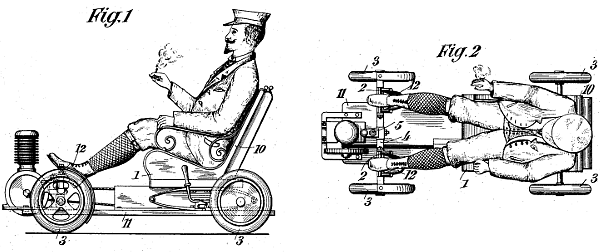
Parking was already a problem in 1906, so Swiss inventor Martin Fischer offered a car that you can drive right up to your apartment:
The width of the frame is smaller than the distance of the wheels. That distance amounts to at most seventy-five centimeters. Consequently the motor-car can pass through doors of ordinary width and up staircases with such ease that even persons residing on the upper floors of ordinary dwelling-houses will be able to keep such motor-cars without the necessity of providing special storage space on the ground floor.
It’s built low to reduce the risk of tipping over when traveling around sharp curves. But what happens if you meet someone else on the stairs?
Unquote
“One of my chief objections to the management of the universe is that we suffer so much more from our gentler and more amiable vices than from our darkest crimes.” — A.E. Housman, letter to Grant Richards, 1913
Express
On Feb. 19, 1916, as workers were digging a new subway line under the East River toward Brooklyn Heights, a burst of compressed air blew 28-year-old Marshall Mabey up through 12 feet of river bed, through the river, and 25 feet into the air atop a geyser of water. Impossibly, he was not seriously injured. From the New York Times:
‘The first thing that told me something was wrong,’ he related yesterday, ‘was when I saw an opening in the earth ahead of the shield which was used to protect the tunnel as we went along. The hole was then about eighteen inches in size. Frank Driver, my partner, and I grabbed hold of a big plank and threw it at the hole to stop it up. I found that the air pressure was pushing me toward the hole, and I tried to save myself by grabbing the air pipes. I missed them, and then I felt myself being pushed into the hole.
‘As I struck the mud it felt as if something was squeezing me tighter than I had ever been squeezed. I was smothered and I guess I lost consciousness. They tell me I was thrown about twenty-five feet above the water when I came out, but I don’t remember that.
‘I am a good swimmer and I kept my mouth shut and came up to the surface. I had on my big rubber boots and they bothered me but I managed somehow to keep my head above the surface. My left leg was numb but I could move it. Finally men on a pier threw me a rope and I held on until I was taken out of the water.’
He said he hoped to return to work within a day or two. “Of course I know that Marshall is in danger every time he goes to work,” said his wife, “but all work is dangerous and my husband is as careful as he can be. His job is a good one and I am glad he has it.”
In a Word
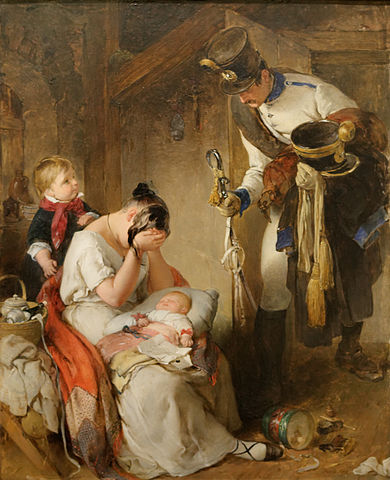
ploration
n. weeping
begrutten
adj. having a face swollen from weeping
Niobe
n. an inconsolably bereaved woman, a weeping woman
The Butterfly Theorem

Draw a circle, choose any chord PQ, and draw two further chords AB and CD through its midpoint M. Now, if AD and BC intersect PQ at X and Y, M will always be the midpoint of XY.
In Icons of Mathematics (2011), Claudi Alsina and Roger Nelsen write, “The surprise is the unexpected symmetry arising from an almost random construction.” The theorem first appeared in 1815.
Averageness
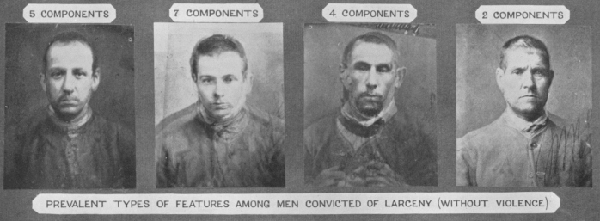
In 1883 Francis Galton tried an experiment: He combined multiple photographs of criminals into composite images, hoping to discover an underlying “type.” He didn’t get a strong result, but he did notice something odd about the composite faces: They tended to be more attractive than the individual images that made them up. He found similar effects with other groups — a composite “sick person” seemed healthier than its constituent images, and a group of good-looking people became even more beautiful in composite. In one case he made a “singularly beautiful combination of the faces of six different Roman ladies, forming a charming ideal profile.”
The lesson seems to be that we find an “average” face most attractive — a face is appealing not because it has unusual features but because it lacks them. For example (below), a University of Toronto study found that the shape of Jessica Alba’s face approaches the average for all female profiles: The distance between her pupils is 46 percent of the width of her face, and the distance between her eyes and her mouth is 36 percent of the length of her face. The fact that we find this attractive makes some evolutionary sense: Natural selection tends to drive out disadvantageous features, so a partner with an “average” face is more likely to be healthy and fertile.
